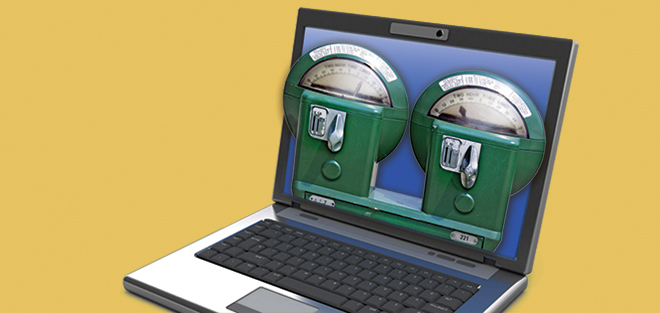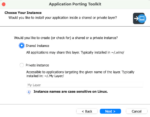
Software licensing models are continually evolving to accommodate new technologies and business models. Over the past 15 years alone, licensing terms have expanded to take into consideration the mobile population, virtualized servers, multicore processors, subscription models, and the digital delivery of products. Metered usage may represent the next wave of change as the number of cloud-based services and business models increase.
“Back in the day, you had one IDE, you probably were a Windows or Mac developer making desktop products, and life was easy,” said Jon Gillespie-Brown, founder and CEO of licensing and analytics company Nalpeiron. “You sold on a perpetual basis, threw [your product] out the door, and then every year you’d try to get customers to upgrade. You probably had one basic product and one business model.”
Microsoft now has nine license categories spanning its broad array of products. While most ISVs have fewer than that, many of them are branching out from traditional licensing models to remain competitive and to satisfy customers’ demands.
“The business models are changing rapidly, and software companies are trying to find out what works best for their customers,” said Keith Kupferschmid, general counsel and senior vice president of Intellectual Property Policy and Enforcement at SIIA. “They also want to make sure their customers understand what those new business models are so they can take advantage of them to the best of their ability.”
Why ISVs hesitate to embrace SaaS subscriptions
SaaS subscriptions offer a lot of potential benefits to end users such as faster access to software, easier on-boarding, automatic product updates, and lower total cost of ownership. While the benefits to ISVs have received less attention from the media, one popular benefit is the ability to expand the universe of potential customers.
“ISVs can tap into a new set of customers and create new customer opportunities,” said Amy Mizoras Konary, research vice president at IDC. “There are other reasons why companies are moving to SaaS, but that’s the big one because they see it as the wave of their future, their growth strategy.”
Moving to SaaS is not something that should be taken lightly, however, because it has a dramatic effect on cash flow. Oracle recently missed its quarterly numbers and attributed the shortfall to moving to SaaS. And Oracle is not alone.
“If I’m offering on-premise software now and I want to move to the cloud, there’s an operational question about how we transform our business model from a perpetual license to a subscription,” said Shlomo Weiss, general manager of SafeNet’s software monetization division. “One thing that surprised us was that it’s not just on-premise vendors moving to offer a cloud service; they want to use cloud-like licensing and business models in traditional on-premise software. That way, the customer can install the product and then be charged based on subscription or usage.”
For one thing, product “packaging” may change. Instead of selling a single physical product with lots of features, its virtual equivalent may be offered as a basic service with additional options available for purchase. Effectively embracing SaaS requires changes to the business model and the technological infrastructure, as well as modifications to the licensing terms.
“The problem with moving to a subscription model is the cost of the sales process,” said Duncan Jones, vice president and principal analyst at Forrester Research. “If you spend US$1 million selling on-premise software and you sell $1 million worth of perpetual licenses that year, you break even. Then, you charge maintenance and that’s your profit.
“In the subscription model, you may spend that $1 million, but instead of getting $1 million now, you get $300,000 for the next three years. Over the long term, the revenue is more predictable, but in the short term it looks like a huge loss. That’s because accounting really hasn’t caught up with the reality, so you’re booking the cost ahead of the revenue.”
If impressing investors is the goal, embrace SaaS. Jones said investors are not looking for profitability; they’re looking at the long-term revenue potential. The subscription model provides greater revenue predictability over the long term than the traditional on-premise license and maintenance model.
Another benefit of the SaaS model is built-in intelligence. ISVs can track the usage of products and features to more accurately prioritize improvements and to identify new market opportunities. The tracking and use of data as well as software access and use all end up as elements of licensing terms. SafeNet built its Sentinel Cloud solution from the ground up to meet the unique requirements of the cloud environment.
Virtualized servers are causing angst
ISVs selling to enterprise clients have to support virtualized servers. The challenge is accurately tracking the licenses.
“When a customer deploys in a virtual environment, you want to ensure they are complying with the license terms. That’s hard to enforce because you’ve got no control,” said SafeNet’s Weiss.
Controlling physical server licenses is comparatively easy because they are tied to individual servers. That model fails in a virtualized environment, which is why software license-management solution providers have had to update their offerings.
“Virtualization destroys [the physical server] model because it prevents a vendor from getting to a machine,” said Nalpeiron’s Gillespie-Brown. “That makes it impossible for the old style way of licensing to be effective. So basically, virtual machines are an effective way of pirating software that uses the old-style mechanisms.”
To solve the problem, Nalpeiron developed patent-pending methods of tracking licenses in virtual environments that are lightweight and cloud-oriented. Other vendors are also attacking the problem.
Some software providers have established formidable audit teams to verify license compliance. The number of such audits is increasing, and there is a backlash from customers. On the other hand, even inadvertent license misuse translates to lost revenue for software providers. IDC’s Konary said virtualization saved one company $5 million in hardware costs, but it was later blindsided by a $42 million software compliance issue.
“Most people are tracking software licenses manually because there are so many cracks between the tool sets people have,” she said. “I hope in five years there are better tools out there for customers to manage licenses more effectively. That will make everything better for everyone, including software vendors.”
Redefining value
Any successful licensing model has to provide value to the ISV and to the end customer. Because “value” is a moving target, ISVs have to continually rethink their business models.
“The old assumption was that business value was proportional to processing power,” said Forrester’s Jones. “If you bought a big server, then software must be valuable because the hardware was so expensive. That’s no longer the case.
“You can have applications that consume lots of data but aren’t that valuable business-wise, so there’s no longer a relationship between data volumes and processing value and business value. You can’t use that as a measure for how much people are going to pay for your software.”
Determining the value of software isn’t easy. It can vary depending on the type of industry and the type of software.
“Software companies will have to become like utilities,” said Nalpeiron’s Gillespie-Brown. “I will sell you my software and you will pay me based on consumption, like PG&E. You will need analytics because software metering has no inherent copy protection in it, which is the basis for software licensing today.”
Nalpeiron has already built an analytics platform to accommodate such a model. The platform also allows ISVs selling desktop applications to view the same information as a SaaS vendor, such as who’s using the product and how often.
Metered software usage is expected to become more popular as the Internet of Things grows. IDC’s Konary sees the embedded market as the sweet spot for the metered usage model, whether it’s in optional per-use features in cars or medical equipment that is billed on a per-use basis.
“[Consumption-based licenses] are one of the evolutions that we’ll see in software licensing,” she said. “It won’t be the traditional software industry, but what it means for developers is that more of the work they will be doing will be creating experiences that can be monetized in a certain way.”
Already, SafeNet customers in the healthcare, communications infrastructure, financial services and media industries are embracing metered usage. There may be baseline fees for operating-room equipment and software, and there may be consumption-based charges for add-on functionality while a cloud-based file transfer service charges based on bandwidth usage. Some companies are upselling based on usage.
“Companies are thinking more like service providers in terms of offerings and the packages they offer,” said SafeNet’s Weiss. “It requires them to think differently about their businesses, the benefits they offer customers, and how the changes will benefit their company. It’s all early stage, but I expect it to accelerate.”
Consumption-based licensing revenue is less predictable than SaaS since users only pay for what they use. However, there are other options such as banded usage, in which a certain number of uses or transactions are available for an agreed-upon fee. Regardless of which business model an ISV chooses, the value of the software it provides must ultimately align with customers’ expectations.
“If you’re a traditional model company, you could sell a license and you don’t really care whether your customer ever implemented it,” said Forrester’s Jones. “You’re getting the maintenance money. If the project isn’t a success it’s not your problem. SaaS vendors can’t do that. They’re gearing their companies up to focus on delivering customer success. You can talk about product features, but at the end of the day, your customers are going to have to justify their investment by saying that they’re going to increase sales, reduce inventory, reduce headcount, or achieve some other hard value savings.”
Meanwhile, licensing terms need to keep pace with changing technologies and business models.
“It’s a challenge to keep the legal terminology consistent with the way businesses are actually running and with the way people are accessing and using the software,” said SIIA’s Kupferschmid. “I think it’s pretty clear that the entire business model for software is moving toward SaaS/cloud.”
Software licensing trends mean business
Agilis—Nephele is an affordable enterprise-class licensing service for enterprise ISVs and cloud service providers. It provides a full range of capabilities, including product activation, Internet-based floating licensing, enterprise license pooling, and complex license configurations that are available for Internet-connected and disconnected systems. Nephele is available for native multi-platform Java and C/C++ on all major enterprise platforms.
Az-Tech Software—EverKey allows fine-grain control of where and how software products are used. It provides the flexibility to market software as a standalone package, trial evaluation, or bundled with other products. Using EverKey, it is easy to control execution limits, time limits, and feature limits. The product reduces software piracy risks, helps end customers comply with license agreements, and enables more effective marketing of software products.
Flexera—FlexNet Licensing combats software piracy and increase revenue by enabling new pricing, packaging and software licensing models. It supports the full software licensing spectrum, from strict enforcement to usage-based trust but verify, enabling software protection, monetization, and compliance of on-premise, SaaS, cloud, virtualized, and embedded applications.
InstallAware—InstallAware Developer is a powerful software installation solution for Windows Installer that enables MSIcode scripting for rapid setup development. It is less costly and easier to use than some other solution. The product was recently enhanced with DRM protection for any Win32, Win64 or .NET application that does not require changes to existing source code. InstallAware Developer can also detect and manage setups on virtual machines.
jProductivity—Protection is a multi-platform licensing toolkit for Java that allows developers to add licensing to applications or components, only allowing the permitted use according to the supplied license. It uses high-encryption technology and provides easy integration, even for cross-platform products. Developers can use Protection to track license usage and manage their customer base.
License4J—License4J is a solution set for Java software product licensing that includes Java libraries, a license manager tool, automatic license generation-capabilities, an activation server application, and a floating license server to generate and validate license text, license keys, and floating license files. A pure Java runtime library provides static methods for license validation, online activation, deactivation and validation.
Mirrasoft—Mirrakey is a simple licensing system that generates CD keys and license keys for software activation and registration. It easily integrates into development projects, providing instant license key validation. Developers have the option of using Mirrakey’s built-in license key manager or using their own. As an ActiveX DLL, Mirrakey supports any COM-compliant development environment.
Nalpeiron—Nalpeiron Licensing and Analytics Service enables software providers to control their applications with flexible and easy-to-implement license management. Users can be migrated from existing licensing to Nalpeiron using an out-of-the-box solution with a 99.9% uptime SLA. The platform also offers real-time feature usage analytics to focus engineering efforts. Nalpeiron is platform- and device-agnostic, and allows organizations to outsource their licensing infrastructure.
rDoss—ObjectLock is a flexible software licensing system that allows developers to license software and protect copyright holders under Windows and Linux. It currently has a Java GUI, and it consists of C++ subsystems for X.509 and RSA. The technology includes proprietary algorithms for encryption, decryption, and copyright protection.
Reprise Software—Reprise License Manager (RLM) helps software publishers and hardware manufacturers increase revenue by enabling flexible license delivery of products. It is a flexible and simple license manager capable of serving enterprise users. RLM supports numerous licensing models and multiple platforms. It includes public key encryption and tools that enable end customers to understand license use.
SafeNet—Sentinel is a robust portfolio of products and services that address every aspect of the software monetization life cycle, from copy and intellectual property protection to product catalog management and end-user experience improvement. Sentinel allows developers to monetize any type of software whether it is installed, embedded, or cloud services using any combination of business models, sales channels, and devices.
SoftwareKey—Protection Plus is a software licensing toolkit that allows developers to protect their software, create trial versions, and implement electronic license activation. Using Protection Plus, developers can create trials, rentals, and pay-per-use applications as well as distribute software updates, collect software usage information, and verify that a customer’s license is still valid.
SoftwareShield—SoftwareShield ISV Edition is designed for ISVs that want to protect their .NET or binary code. Using SoftwareShield, developers can quickly add a trial to their applications and limit the duration of the trial by use or by time period. It provides unlimited feature locking with minimal code integration and does not require additional dependencies. SoftwareShield ISV has a small footprint and supports offline activation.
Soraco—Quick License Manager (QLM) adds software license protection to applications using secure asymmetric license keys. Developers can provide their customers with trial license keys, or bind the license key to a specific computer to prevent software piracy. QLM fully automates the sales and license key distribution process with online activation. It supports multiple business models, platforms, and languages.
StrongBit Technology—HardKey License Manager is an easy-to-use and robust software license-management system. The encryption engine allows short serial numbers to be created and verified while preserving a high level of security. It includes public key encryption, a serial number verification module, full-featured serial number support, and external serial number generation.
Wibu-Systems—CodeMeter License Central enables the creation, management and distribution of software licenses. It allows even complex licensing models to be mapped in a straightforward manner to meet requirements. Code Meter License is available as a turnkey Desktop Edition and as an Internet Edition. Automated license delivery with online activation is also available.
X-Formation—LM-X License Manager is a software licensing solution that provides a wide range of licensing models and features so ISVs can securely license and protect their product as well as reach new markets and customers. It consists of several libraries and tools and is able to run on numerous platforms including Windows, Linux and Mac OS X. With LM-X, developers can reduce business risks and save time.





